This month’s journey through the best comics of 2024 was especially fun because we’re deep enough into the year that I got to perform my annual ritual of organizing and bingeing all the floppies sitting in my to-read longboxes. My office floor is literally covered with Kaya, What’s the Furthest Place From Here, Usagi Yojimbo, Ice Cream Man, Robin: the Boy Wonder, and more (some of which you’ll see below!). While I’m often critical of the pre-order system and month-to-month experience of reading direct market comics, I do LOVE powering through physical mag after physical mag once enough have accumulated to properly enjoy a full story.
Don’t hesitate to let me know any of your favorites I may have missed via dave@comicbookherald.com!
To get these picks sent directly to your mailbox every month, sign up here for free.
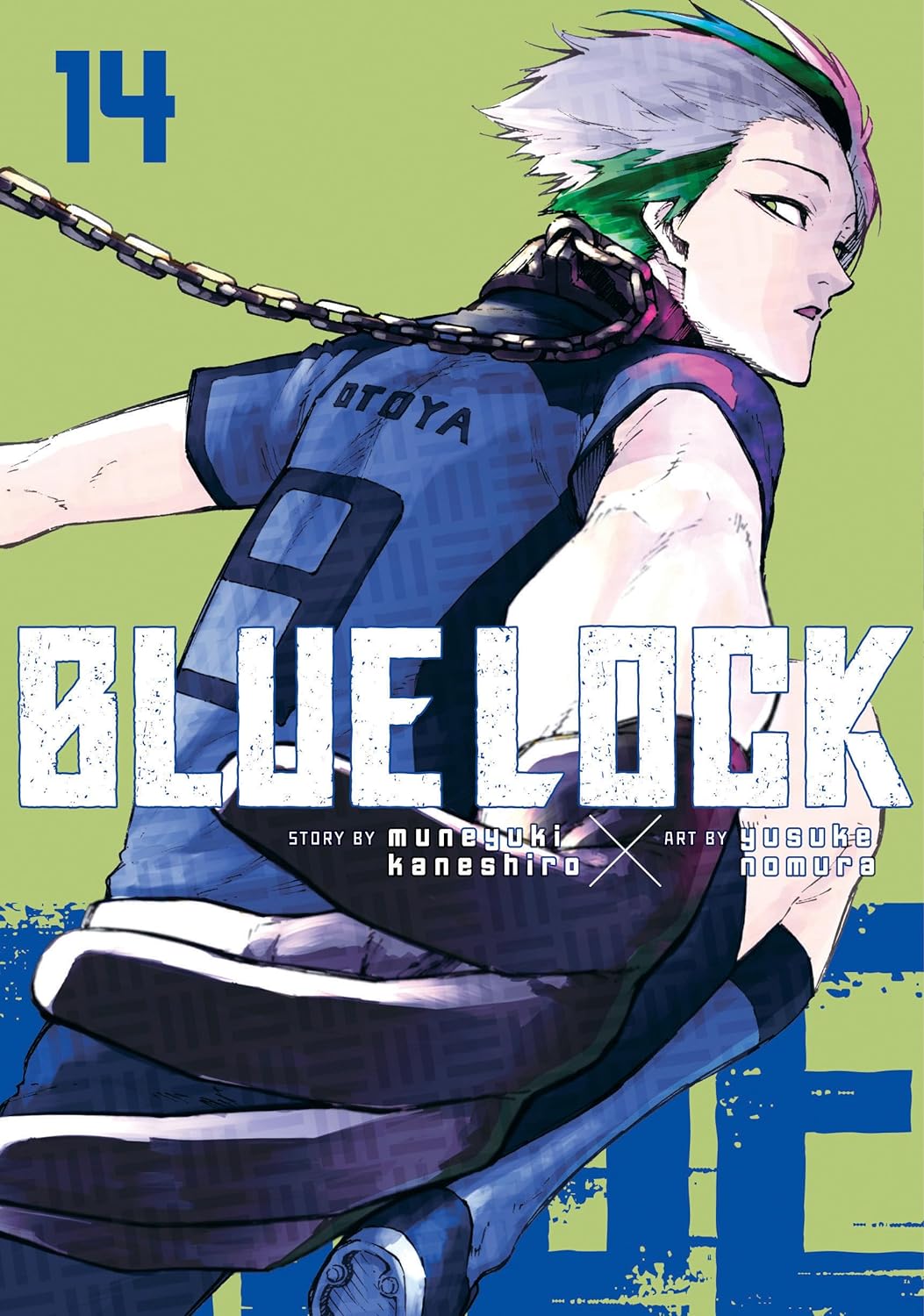
Blue Lock Vol. 14
Man, I don’t even like soccer (dumb American, I know!), but Muneyuki Kaneshiro’s story about what it takes to get Japan a win in the World Cup is one of my favorite sports manga since I read Slam Dunk. Kaneshiro combines tactical soccer acumen, Hunger Games-like training regimens, and treating competitors like Pokemon (from the synopsis of their skills down to the blending of almost supernatural effects depicting their abilities). Whereas a lot of the sports manga that hasn’t gripped me (Haikyu!) focuses on a more standard journey through competitive school sports (this is the Slam Dunk template), Blue Lock cracks open enough corners of strangeness and desperation to be the champ that sets it apart. I’m all caught up with present day in the span of 3 months – highly recommend getting on board!
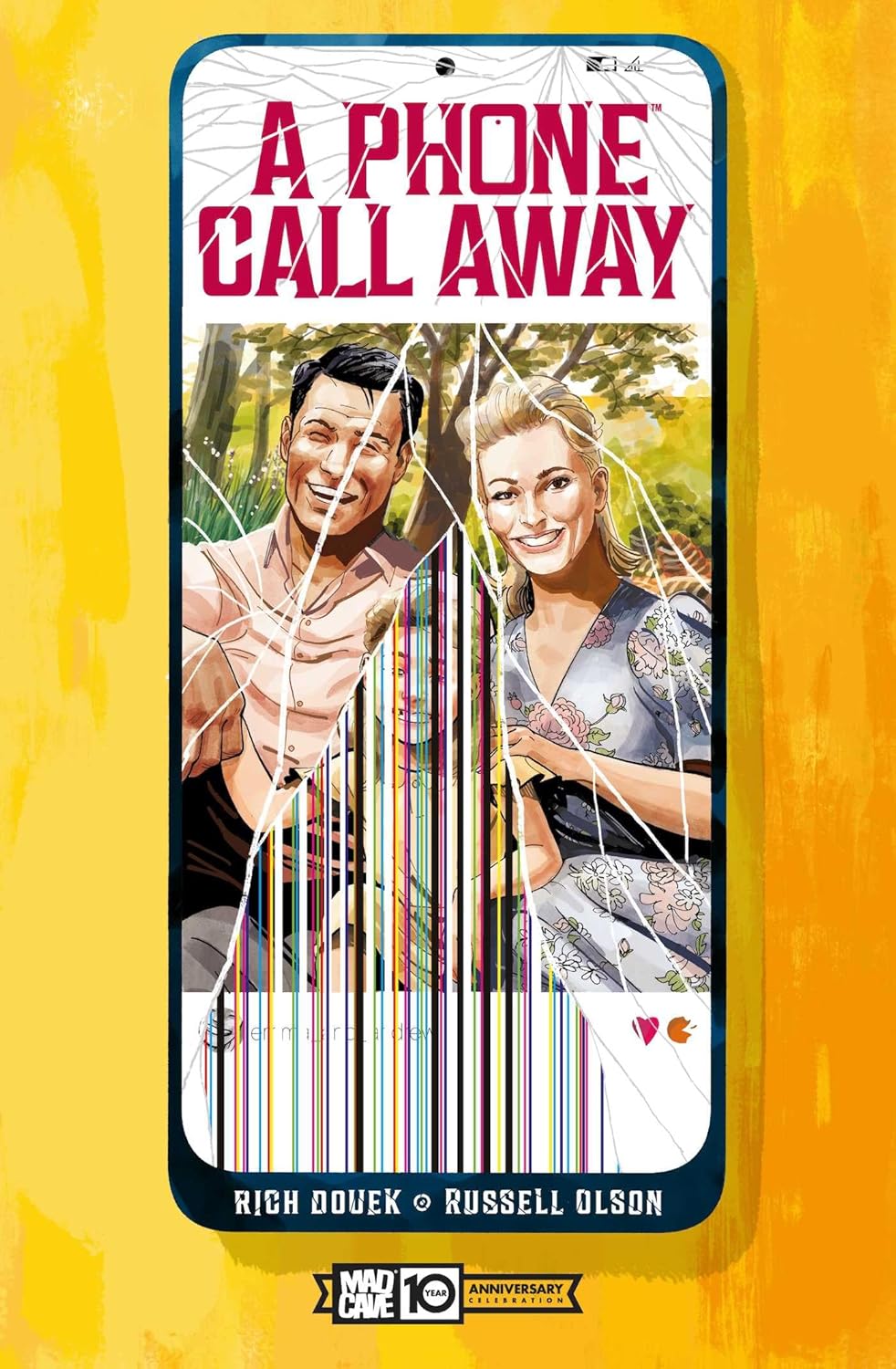
A Phone Call Away
This tight graphic novella from Rich Douek, Russell Mark Olson, and Mad Cave is a classic lite-mystery reflecting on a culture obsessed with influencer celebrity. It’s like if Pokerface did an episode on the parents of Jon Benet Ramsey after her parents rose to fame raising a lookalike sibling. Everything about A Phone Call Away is predictable, but in an oddly comforting, entirely controlled way. It’s a story built on anticipating exactly (or approximately!) how an evil scheme is going to unravel, and celebrating the tension as a couple vile individuals get what they have coming. Douek and Olson have a great handle on dialog and character expression throughout, playing with enough familiar tropes to shortcut through a gripping read. It’s a one-sitting read, and a nice one at that.
Support For Comic Book Herald:
Comic Book Herald is reader-supported. When you buy through links on our site, we may earn a qualifying affiliate commission.
Comic Book Herald’s reading orders and guides are also made possible by reader support on Patreon, and generous reader donations.
Any size contribution will help keep CBH alive and full of new comics guides and content. Support CBH on Patreon for exclusive rewards, or Donate here! Thank you for reading!
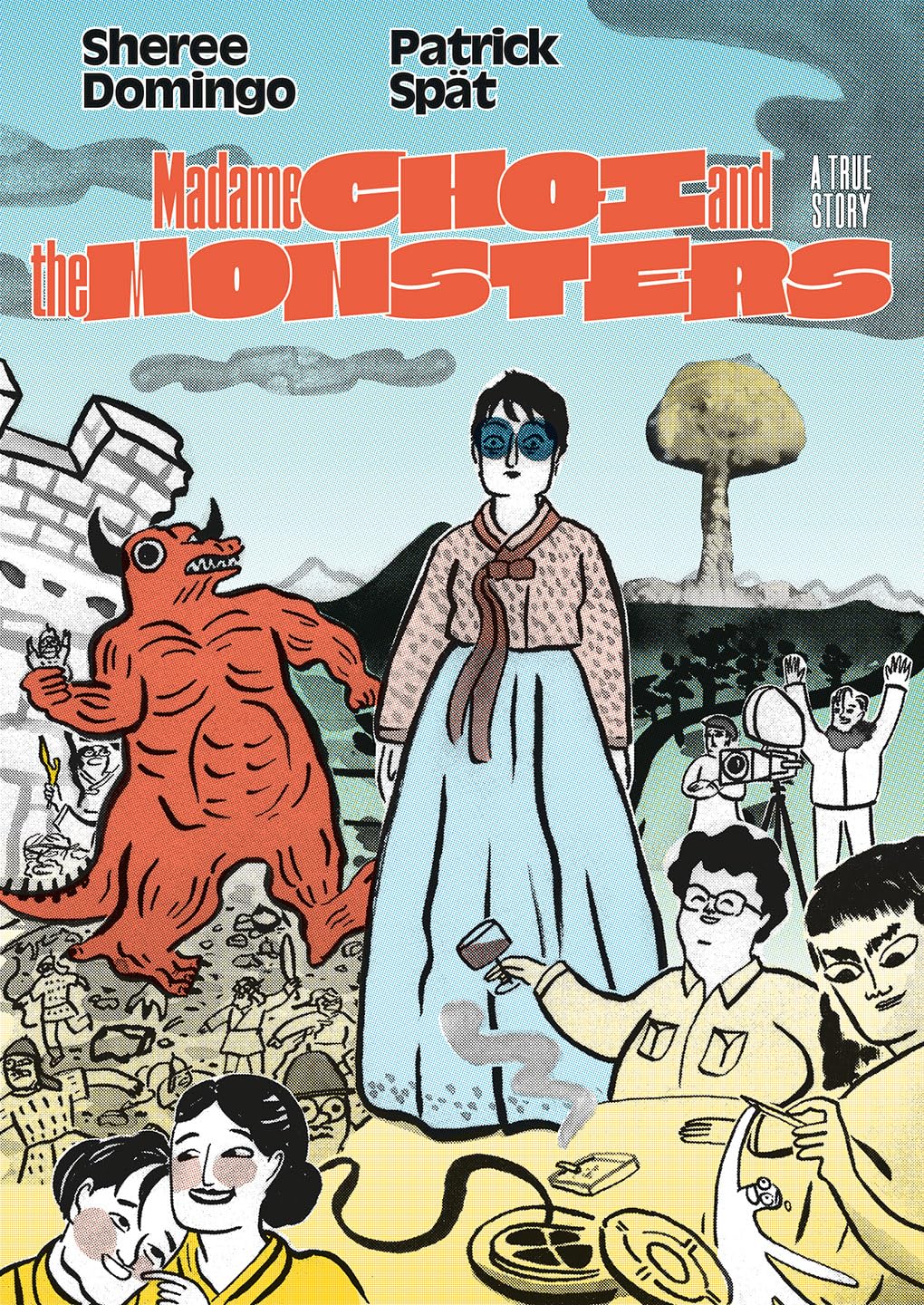
Madame Choi and the Monsters: A True Story
The story of Kim Jong-Il’s kidnapping of South Korea’s film stars Choi Eun-hee and her ex-husband (and director) Shin Sang-ok is already one of the wildest historical stories you’re liable to hear (to the tune of a bestselling work, A Kim Jong-Il Production, written by Paul Fischer.) Purely on the power of truth-is-stranger-than-fiction, a rising Dictactor kidnapping film stars to make his own movies (dude loved Cinema!) is so incredible, it makes for a fascinating Wikipedia deep dive on its own terms.
In Madame Choi and the Monsters, Patrick Spat and Sheree Domingo avoid a straightforward retelling by mixing Eun-hee’s story with a recreation of the 1962 film Bulgasari, based on old Korean myths starring an iron-eating monster resembling Godzilla. The effect put me off balance but curious. It isn’t until the book’s midway point that Kim Jong-Il re-enters the picture, and the seemingly unrelated stories co-mingle into a singular vision. Despite the drama of the truth – rising dictators and desperate escapes for the American embassy – Domingo’s style is often restrained and exuberant in its jovial cartooning. This is true in early sequences of the mercurial dictator or the Godzilla-esque Bulgasari, but undone during Eun-hee’s moments of despair at being kidnapped and removed from her children. By the work’s end I simply couldn’t help but admire the ambition of this approach, and how committed Spat and Domingo are to telling the full story of Bulgasari amidst the history.
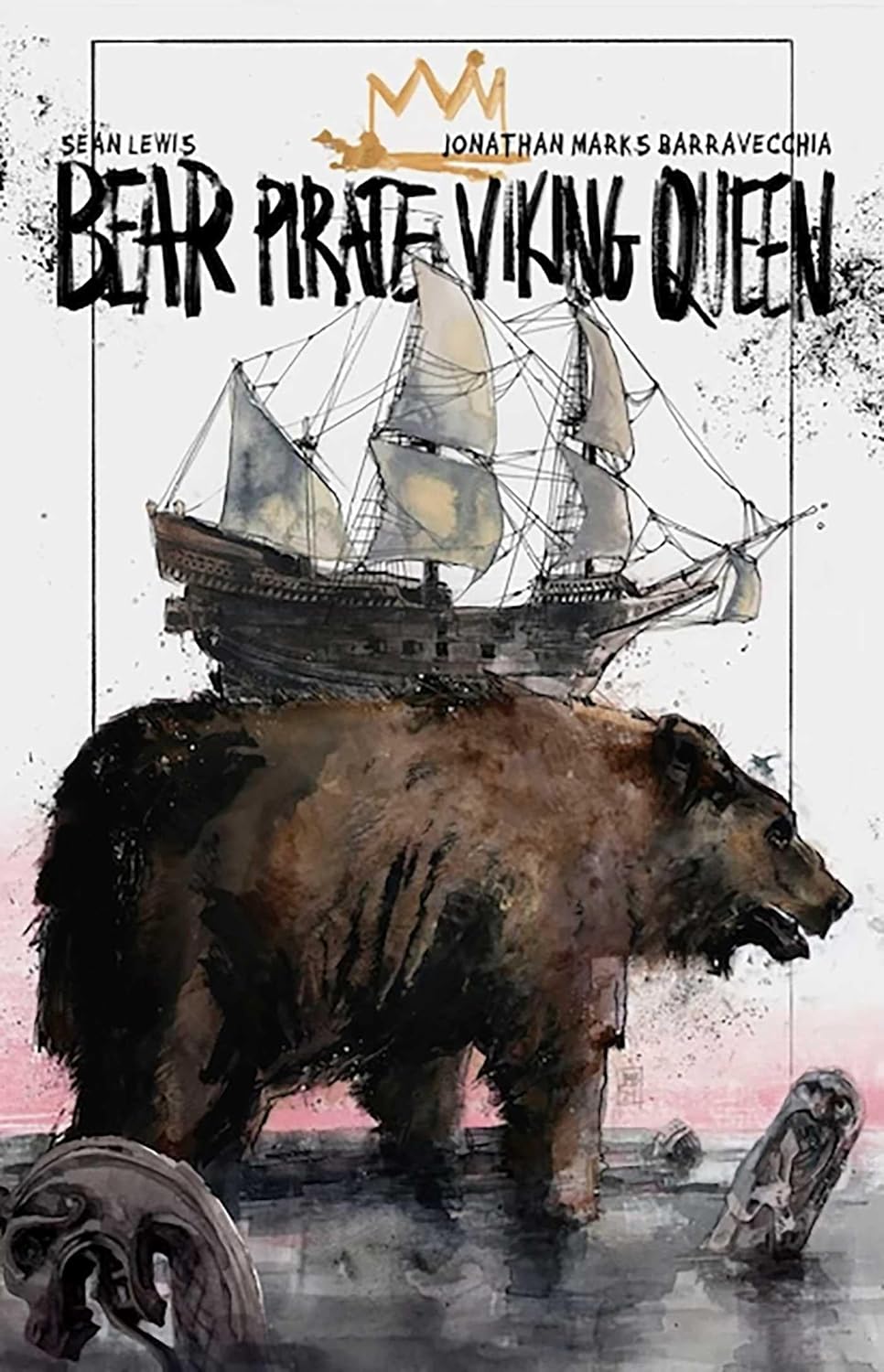
Bear Pirate Viking Queen
On the surface, BPVQ isn’t so much a story as it is raw mythological magnetism on the page. Jonathan Marks Barravecchia’s Sienkiewicz-infused abstractions collage and collide across the page, a swirling high-seas painted dream of oceanic Bears, Norse-god pirate-monsters, and the inevitable violence that comes from both. You can get lost in a Barravecchia page, particularly in instances where images compile upon images, in a kaleidoscope maze of fantasy. Sienkiewicz is the clear godfather influence for all our modern abstractionists – Martin Simmonds and Stipan Morian quickly come to mind – but the comparison is too easy without delineating modes of Bill: His Moon Knight isn’t his New Mutants isn’t his Stray Toasters after all. For much of its blood-soaked tale of vengeance, Bear Pirate Viking Queen leans more heavily towards Stray Toasters, that pure abstract expression that screams send all your linear narrative comics rules to the fiery pits of hell.
At its heart, though, Sean Lewis and Barrevecchia combine to execute a more purposeful message than the opening number might lead you to expect. It’s a story of pirates and a Bear that rises out of the ocean, yes, but it’s also a screed against the history of imperialism as represented by The Queen (there’s a particular panel of The Queen with a crown made out of a palace that is a wonderful example of Barravecchia’s mile-a-minute explosion of metaphorical imagery throughout). It would be easy to critique BPVQ as mere “great art tho” but that thoroughly misses the point and the purpose. There’s real poetry in Lewis’ telling, real anger in the evils being confronted. So come, look that evil in the eye; just try not to sink too deeply into the circles of its rage.

What’s the Furthest Place From Here Vol. 3
If I evaluated comics purely based on how much I like holding single issues in my hands, Tyler Boss, Matt Rosenberg, and Hassan Otsmane-Elhaou’s What’s the Furthest Place From Here would be in the running for best of the year. For example, issue #18, the final issue in the third volume, comes in at a whooping 39 pages of art, plus chapter breaks and credits, all for the perfectly reasonable Image standard of $3.99. I suppose the downside to this great value is only 4 new issues of the series will be released in 2024, but if you binge the meaty beauts in volume-sized increments, the only downside is hoping you remember what happened last time! As a whole, it’s one of the easiest books to recommend actually collecting from your local comic shop issue by issue.
Boss and Rosenberg’s 4 Kids Walk Into a Bank is one of my favorite comics – straight up – and they bring that energy and humor to a gang of youths in a much grimmer post-apocalyptic landscape. It’s Fallout by way of Warriors, but mixed with the irreverence of Wes Anderson, and it all works seamlessly. Their third volume – issues #14 to #18 – moves the plot forward more than anything since the early issues, as the Academy gang struggles to find their way back together, and the secrets of why there are almost no adults in this world are revealed. It’s an impressive direct-market book, where I’m invested in character (Alabama and Syd rule), mystery (what is up with this world), and the pure style Boss and Otsmane-Elhaou bring to every page. I look forward to my annual binge next year when I hold these wonderful comics and think, now this, this is heaven!
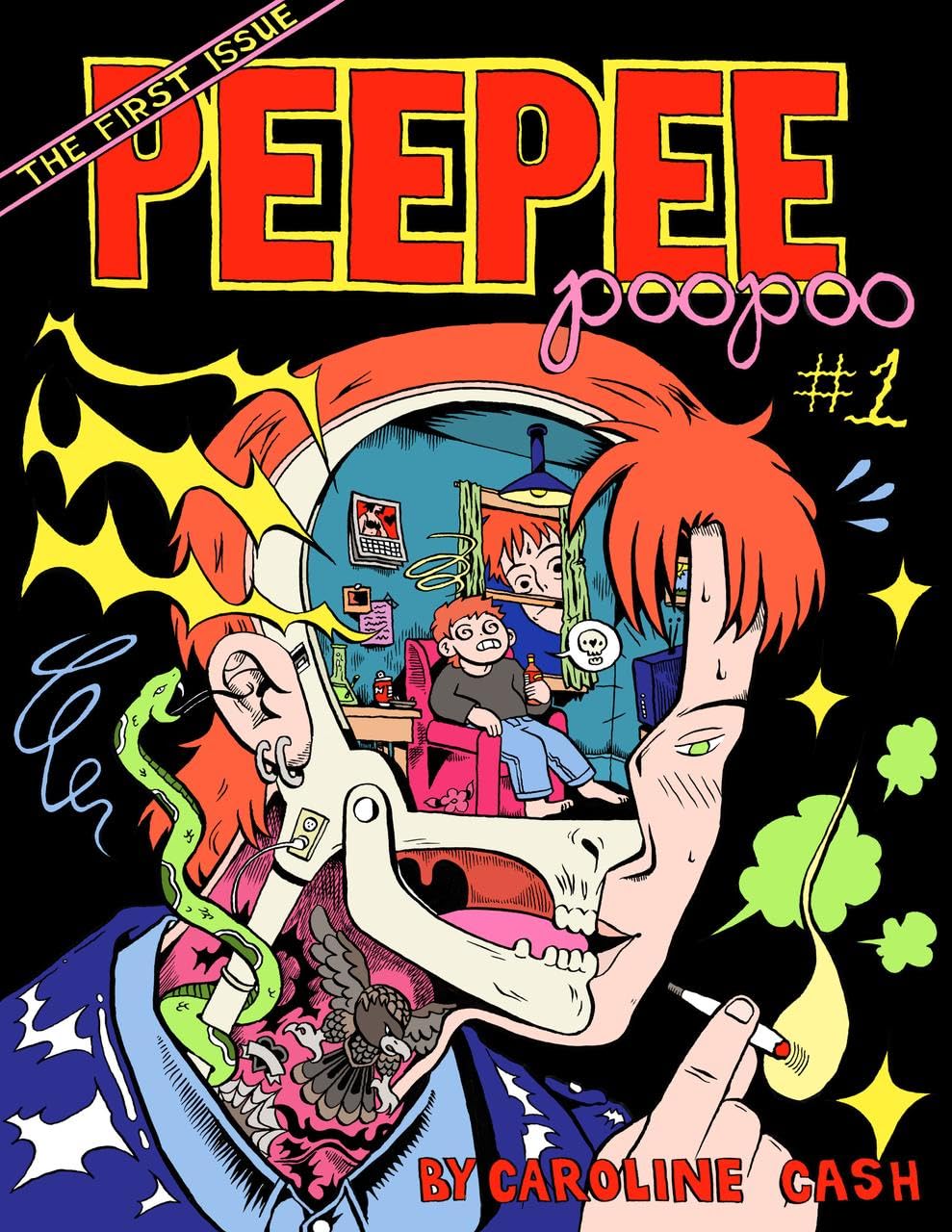
Peepee Poopoo #1
I’ll admit it: It took Caroline Cash’s slice-of-life Comix anthology winning an Eisner for me to even consider reading a comix anthology called Peepee Poopoo. I at least in part blame Dogman and the fact that the Dad in me HAS to resist my kid’s favorite joke. I don’t know why I couldn’t just embrace the juvenile fun of launching an anthology with an issue #420 and issue #69 before the first issue; I think it’s an innate resistance to the R. Crumb worshipping antiquated Comix culture and the snobbery that comes with it. I don’t know; 50 year old guys swooning over Crumb feels like the 16 year-olds I knew in high school swearing up and down that Pink Floyd was the only real music, man. There are so many good alternative-comics scenes, and so much rich independent art available, that it feels depressingly backwards to fixate so whole-heartedly movements rooted in 60s counterculture. There’s enough culture to want to counter as is!
Cash quite clearly owns this, channels this, and blows up the stereotypes of Comix with her humorous, queer, richly detailed of life in Chicago (and beyond!). As an anthology, Peepee Poopoo is deeply indebted to Alison Bechdel, and Daniel Clowes’ Eightball, but through a modern lens of how cartooning has progressed in the 35 years since. I love Cash’s ability to tell a gag short-story about getting stoned and lost in Philadelphia, or about the first attempts at dating in the Pandemic. There’s a real honesty, heart and self-awareness to Cash’s work that instantly pulled me in.
Listen, Peepee Poopoo is awesome. Tell everyone you know.
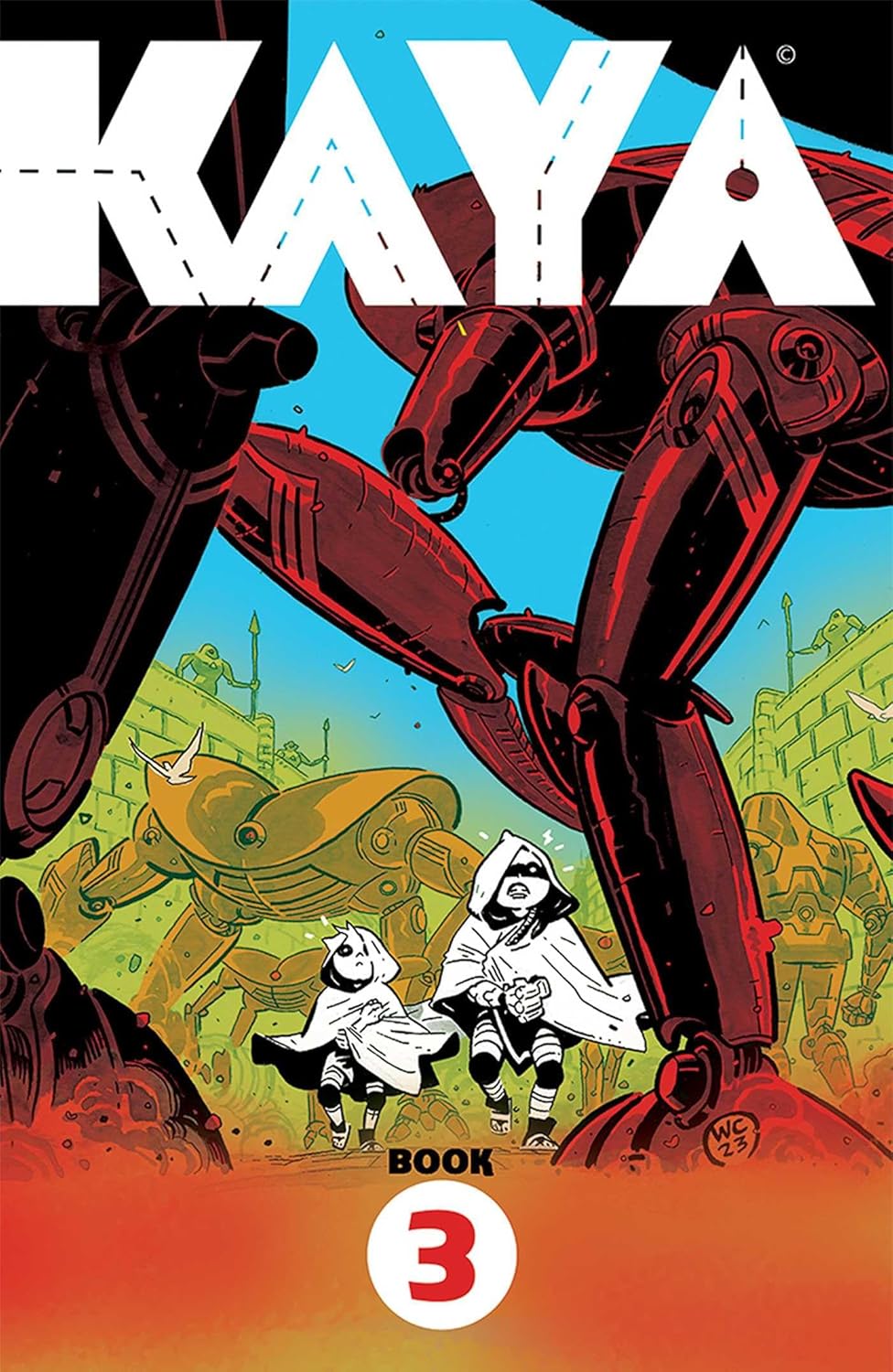
Kaya Vol. 3
Full disclosure: When I was sorting my issues of Kaya, I realized that around issue #12 (where this third volume starts) Wes Craig and the Kaya team started boasting of their 2023 year-end best-of rankings, including the nod from yours truly at Comic Book Herald. So now that I am officially an investor, collaborator, and co-creator of Kaya, it’s inevitable that it receives my most boisterous full-throated support. I don’t write to try to get my name in pull quotes on floppies, but damn if it doesn’t feel good!
Fortunately, I don’t have to lie for the sake of my ego to continue supporting Craig and Kaya. The adventures of Kaya and Jin through Craig’s powerfully uninhibited fantasy landscape of mutants, robots, lizard-people and magic are among the best all-ages comics since Bone. It’s an adventure full of mystery, prophecy, darkness and a core exploring the bonds of family. Plus, all those years on Deadly Class have turned Craig into one of the surest cartoonists in the market, with a brilliant sense of expression, pacing and character design. Craig knows exactly when to turn the key to unleash the dragon (sometimes literally!) and when to build these worlds through expository dialog.
Fans are catching on too. Craig shared earlier this month that pre-orders for Kaya #21 are higher than they were for issue #20, a defiant sign of growth amid the natural tendency for comics to decrease in orders over their shelf-life. Perhaps great longform storytelling can benefit from word of mouth and – gasp! – best of the year lists! As long as it means Kaya is here for years to come, it’s a great thing.
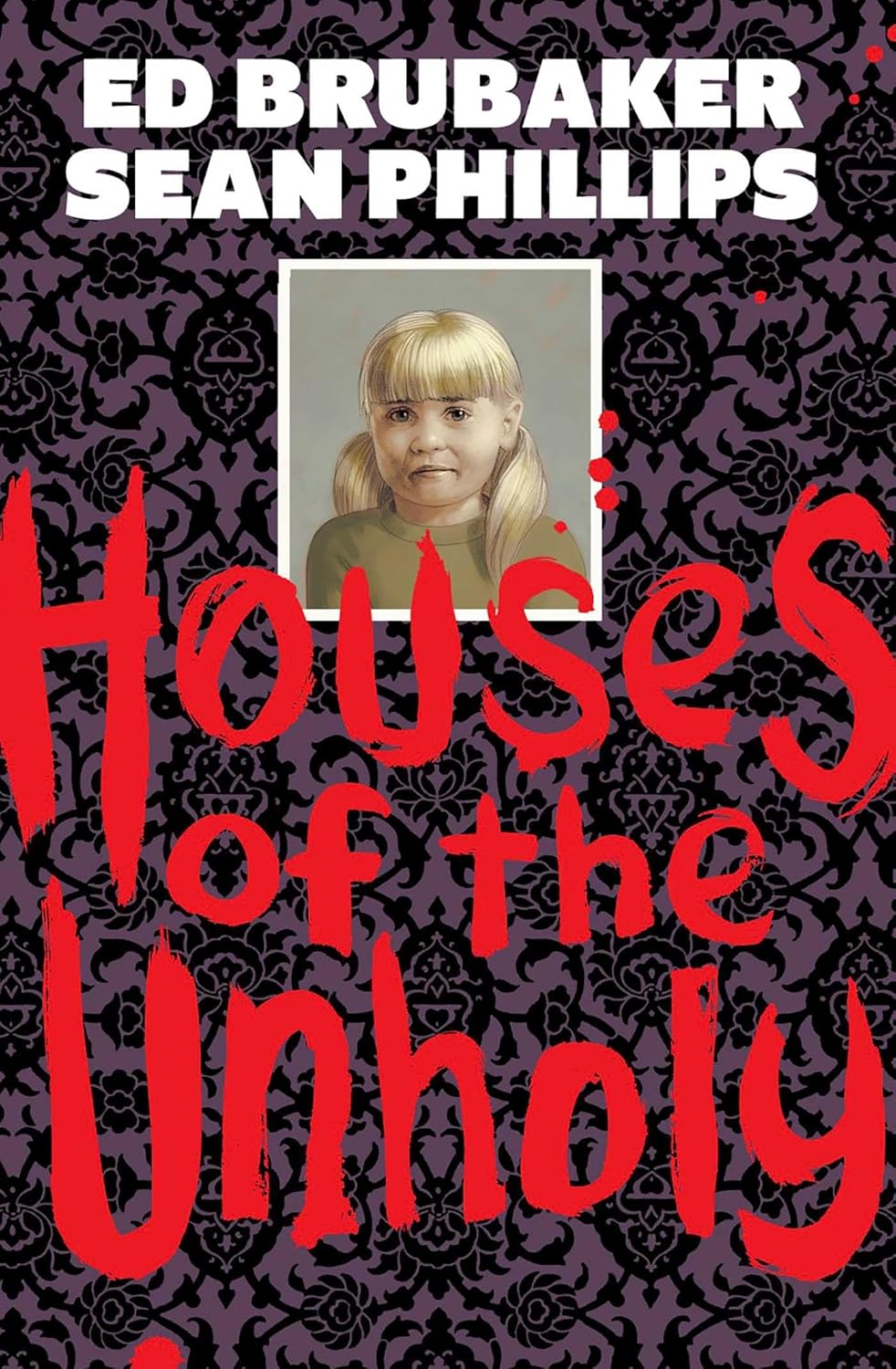
Houses of the Unholy / Friday
At this point, you should be pretty sure where you stand on Ed Brubaker and Sean Phillips, and you should be pretty sure you stand on the side of: make good ass comics. Since the powerhouse duo officially moved from single issues of Criminal to standalone graphic novels, they’ve released Pulp (great), 5 books in the Reckless series (quite good), last year’s Night Fever (weakest of the bunch) and Where the Body Was (good!). Add in 2024’s Houses of the Unholy, and that’s 9 good graphic novels in the span of five years, or as Jay-Z would say, a 9 hot comics every 5 year average. With Sean’s son Jacob in tow as colorist, there’s simply a baseline to a Brubaker/Phillips release that promises a higher certainty of quality than literally anything else in comics.
Here comes the but (my four favorite words in the English language): The last two years of releases since putting Reckless on hiatus haven’t seen the duo’s best work. So as much as I enjoy Houses of the Unholy (it’s here on the best comics of 2024 list, and it has every right to be), it’s also hard not to read it and think… why isn’t this just the next Reckless? It’s a compelling story of 80s Satanic Panic and the ways it intersects with modern conspiracy theories run amok, but it’s also very much the template for story we’ve seen this powerhouse team use since Fatale. The details change, but I’ve heard them play this song before. The good news of course is they WROTE the song, and they play it better than anybody. The question I keep asking: Do they have any tricks left up their sleeve?
That’s where Friday comes into the picture. It took four years for all 9 issues of Friday by Brubaker, Marcos Martin, and Munsta Vicente, but now that the full story is available (for pay-what-you-want at Panel Syndicate), it’s second only to Pulp among my favorite Brubaker works since the last round of Criminal ended. Friday‘s already been celebrated plenty – and if you haven’t experienced the works of Marcos Martin and Munsta Vicente through Spider-Man or Private Eye with Brian K. Vaughan get ready for a TREAT – but the final issues released in 2024 reminded me of something: I love it when Ed gets weird. Friday is a gorgeous, funny, clever comic riffing on Nancy Drew and The Boxcar Children, but as the work develops it sinks deeper and deeper into the supernatural. In the Scooby Doo mystery, the mysterious, murderous White Lady is revealed to be the wife of a Lumber Tycoon hellbent on revenge; in Friday she’s actually a mysterious-ass White Lady of the Forest!
It’s not like Brubaker and Phillips have been afraid to do the unexpected – again, demonic supernatural forces are all over Fatale and Kill or Be Killed – but Friday is a glorious glimpse into what it might be like to bring some of those stranger influences back. Maybe that’s not the answer either, but I find myself looking forward to the next work of theirs that leaves me thinking: I didn’t see that coming.
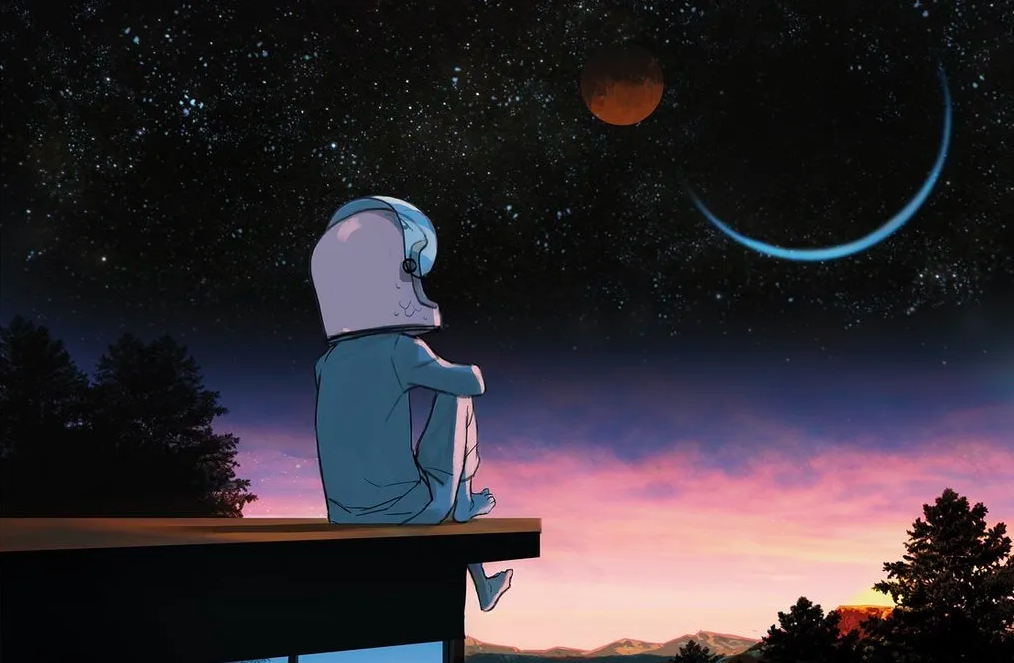
3 Moons 3 Worlds
Oh boy. This is a big one! 3m3w is the Substack Comics Universe launched by Jonathan Hickman, Mike Del Mundo, and Mike Huddleston in August 2021. Remember Substack Comics? This was one of two MASSIVE launch projects (the other was James Tynion IV leaving Batman for Substack money and what is now the quite good Tiny Onion Studios). Three years later and Substack’s moment as The Next Big Thing in comics is long gone, the grant money has dried up, and 3m3w just released their second big package of physical comics to my door. Now, there are two conversations to be had regarding 3m3w. The first is whether it’s worth it to pay for a Hickman-fronted project that has in 3 years physically delivered 2 sourcebooks with about 100 pages of comics per, 2 preview-edition floppy comics, a boatload of concept art prints, and 1 newspaper style cut-out of “Academy” with incredible art by Steve Epting. That’s not the question I’m answering today, although I suspect most of you can answer for yourselves!
The question for right now is: Are the 3 Moons 3 Worlds comics any good? Specifically, are the new 3m3w comics delivered in 2024 worth reading? Broadly, speaking… yeah! Hickman, Del Mundo, Huddleston, and for the last year, Nick Spencer (in some entirely unclear capacity) have created a genuinely fascinating science-fiction universe, and when they or their invited collaborators settle in to tell a story in this universe, it’s of the highest quality. For my money, the greatest skill of 3m3w is TASTE, as this crew has a knack for bringing in the best artists and creative teams to tell their slice-of-universe stories. Throughout 2024, Deniz Camp and Stipan Morian (20th Century Men), Alex Paknadel and Caspar Wijngaard (All Against All), and Dan Watters and DaNi (Coffin Bound), all entered the universe to tell stories as part of the Legends collection of short stories told across this universe (other entrants include Al Ewing, Tini Howard, Phil Hester and Rich Douek!). It’s unusual to see comics creators approach storytelling in this way, but the end result is a playground for some of the best creative teams in the business to compile a really compelling Sci-Fi Anthology.
For the most part, that’s been the 3m3w model to this point – Sci-Fi Anthology of short stories spread across this nascent universe with minimal tethers connecting to one another. That’s what you get in the Sourcebooks as well, with Del Mundo and Huddleston conceptualizing the incredible visuals, and Hickman and various collaborators (Juni Ba! Andre Lima Araujo! James Stokoe!) stepping in to bring them to (brief) life. These are regularly good but the end result does feel a lot like reading the first 10 pages of 30 new comics series. The potential far outweighs the actual satisfaction. But gods, that potential is devilishly tempting.
The one “core” narrative with any development right now follows the story of the adventurer Tajo Vallar, lost and thought-dead on the magical moon Kaoso. The recent physical editions include two Tajo stories: 1) “Academy” with Hickman and Steve Epting telling a Flash Gordon style story of what happened to Tajo after he was lost on Kaoso and 2) “The Vallars,” the most traditional ongoing comic in the line, a prequel story of Tajo as a boy on Therra, from Hickman, Jason Howard, Frank Martin and Rus Wooton. Ironically, on their own merits, neither of these works would live up to best of the year status (and honestly, in the catalog of Hickman’s creator-owned work would barely measure up to anything he’s done in the last decade). Nonetheless, as part of this developing greater whole, I quite enjoyed my time at the Rock of Vallar and the Academy Ruins.
At the end of the day, there are hundreds of words to be spilled on the nature of this project, but none of it changes that a new sci-fi universe of this scope and scale is endlessly ripe for great comics. I’d argue we’ve seen too few of those, but a Hickman/James Stokoe short-story about pirates and mythology is worth its weight in gold. The stories that do exist are unlike anything else in comics.
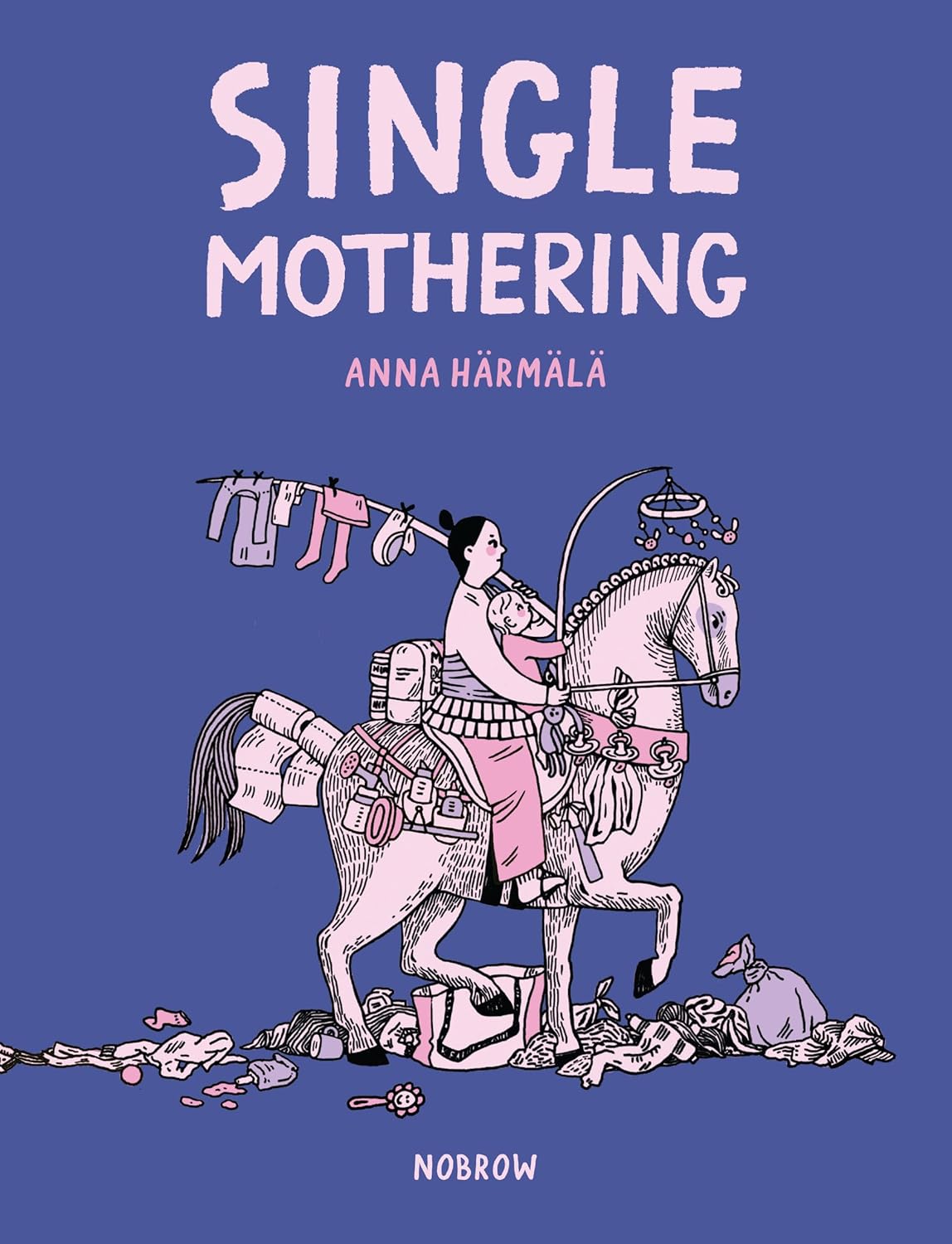
Single Mothering
I expected to find Anna Harmala’s semi-autobiographical Single Mothering an emotional gut-punch, but instead Harmala’s delightful cartooning is one of the funniest and cutting works I’ve read in comics this year. Single Mothering is an informative look at what it’s like to be the (oft) lone new single mother in a group of parents, but Harmala’s quips cut both ways, targeting the misbehaviors of those around her as often as she’s revealing her own navel-gazing faux-pauxs. Set in Helsinki, Harmala also offers a strong glimpse into world culture for this dumb American (I showed my wife a scene of parents leaving their babies in strollers to nap outside a café like I’d just discovered a conspiracy of heretofore unimaginable grotesquery! She calmly informed me that apparently this is quite common!).
Gorgeous, smart, insightful to a specific point-of-view, Single Mothering has everything I look for in a comic book, and it made me laugh out loud to boot. Highly recommended.
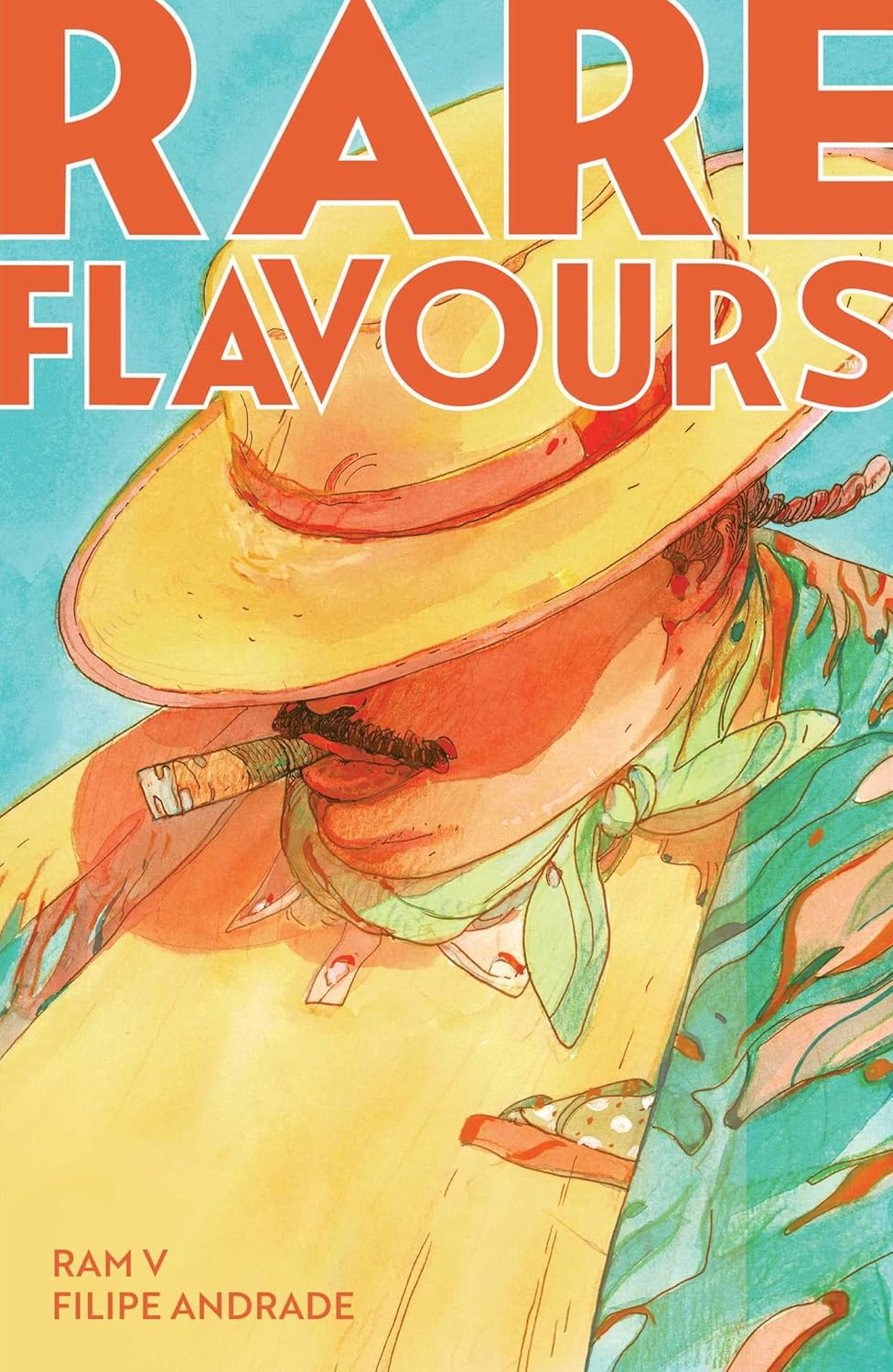
Rare Flavours
It’s so exciting when creators pair-up and form an instant sure thing for great comics. It’s why comics fans perk up for Morrison/Quitely, Brubaker/Phillips, and Gillen/McKelvie. Certain teams can build a reputation that assures some of the best of what comics have to offer, and Ram V and Filipe Andrade are on the fast track to locking in one of comics’ greatest modern partnerships. Following up on the massive success of the EXCELLENT The Many Deaths of Laila Starr, Ram and Andrade return with Rare Flavours, a six issue series from Boom Studios about a demigod/daemon who eats people and consumes their stories but is now hellbent on making a documentary about, uh, food.
There are sensational supernatural hooks we demand of comics – Cannibal Gods! Bounty Hunter assassins! A completely full theater to watch a documentary! – but the genius of Rare Flavours lies in structure and message. The creative powerhouse strike this stunning balance between filmmaking, flashbacks, and recipes, with each of the six issues centered around the ways certain dishes are routed in human lives and stories. This leads our lovable cannibal-god Rubin Baksh to wax poetic about the beauty of being human, as Ram and Andrade powerfully hammer home the value of adding your own depth of flavour to any art you create. It’s an inspiring, melancholy and cathartic work that belongs alongside The Many Deaths of Laila Starr as a modern classic. Best case, you’ll leave Rare Flavours inspired to create your own great works, and worst case, you’ll leave with a better understanding of how to make great triple schezwan rice.
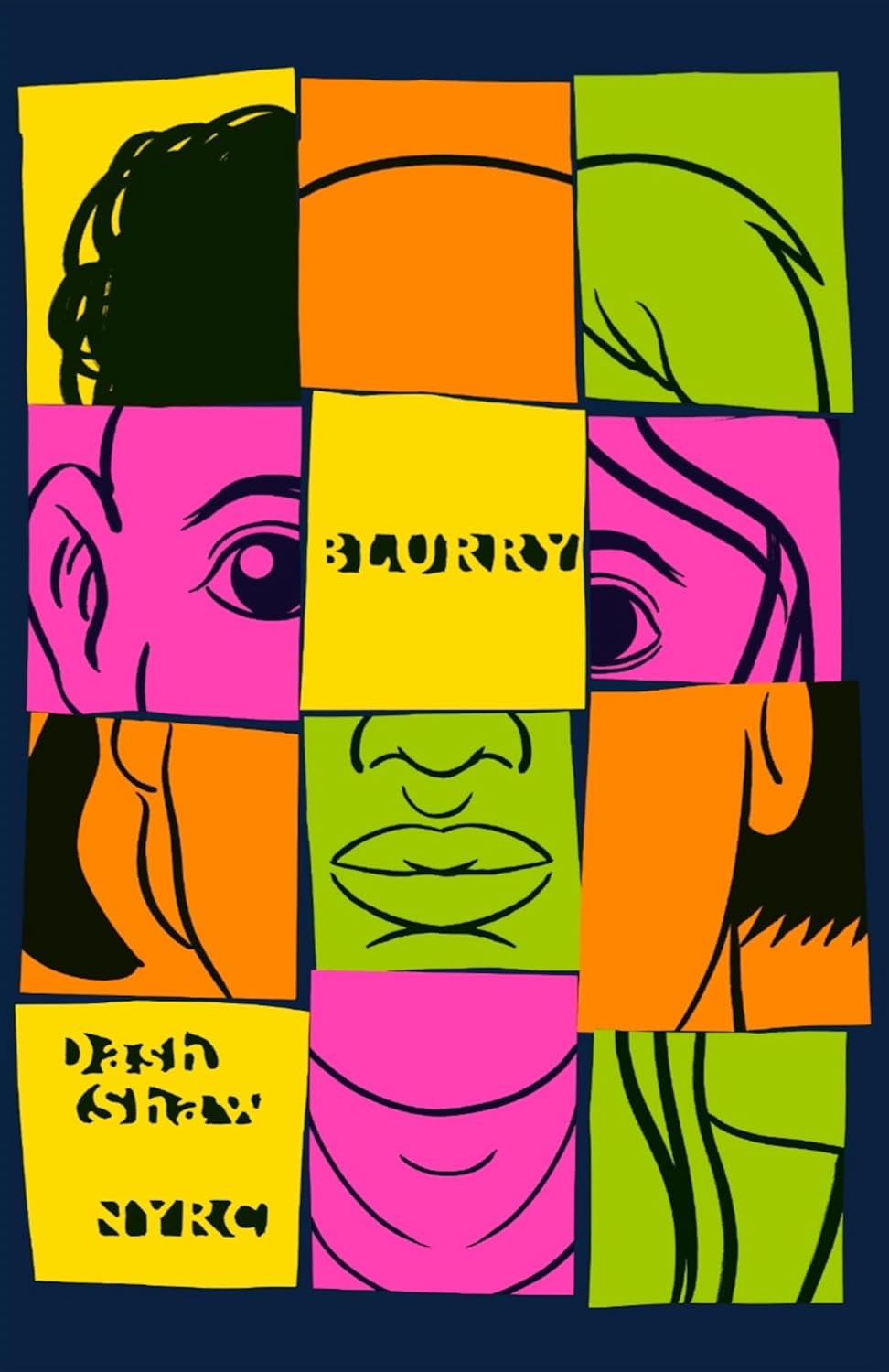
Blurry
Fun fact: For the first 30 pages of Blurry, I confused Dash Shaw with Dax Shepard, and was therefore furious that the actor married to Kristen Bell was this good at making comics out of the gate. I don’t have strong Shepard opinions (I guess other than his parents forgot an ‘R’), but I do bristle at the idea that somebody already granted success in one medium could step in and produce something this… undeniable. Don’t worry, Blurry isn’t the work of some Hollywood-come-lately (you already knew that), instead the carefully considered progression of Shaw’s 20+ years cartooning and releasing critically-acclaimed works primarily through Fantagraphics.
More succinctly: Blurry‘s right in the conversation for graphic novel of the year. Shaw pulls off one of the trickiest feats in comics – a perpetual reset of starting new stories within stories – with such smooth skill I never once got tired of the trick. Every time two characters meet and ask about each other, it’s a chance to jump from one carefully considered life to another, feeling the weight of each individual’s own unique path and the choices that led them to this point. The end result is 10+ character’s who could fill a graphic novel on their own, from an art professor in a failing marriage to the queer black model in his art class to a novelist in search of a second book… the possibilities are endless, and Shaw devotes fully to each slice-of-life quest. The throughline is thematic, centered around a woman’s inability to choose flavors of ice cream, as each character faces life-altering choices of their own. I’ll be reading everything else Shaw has ever done, and never mistaking him for Dax Shepard again; this is instant classic work right here.

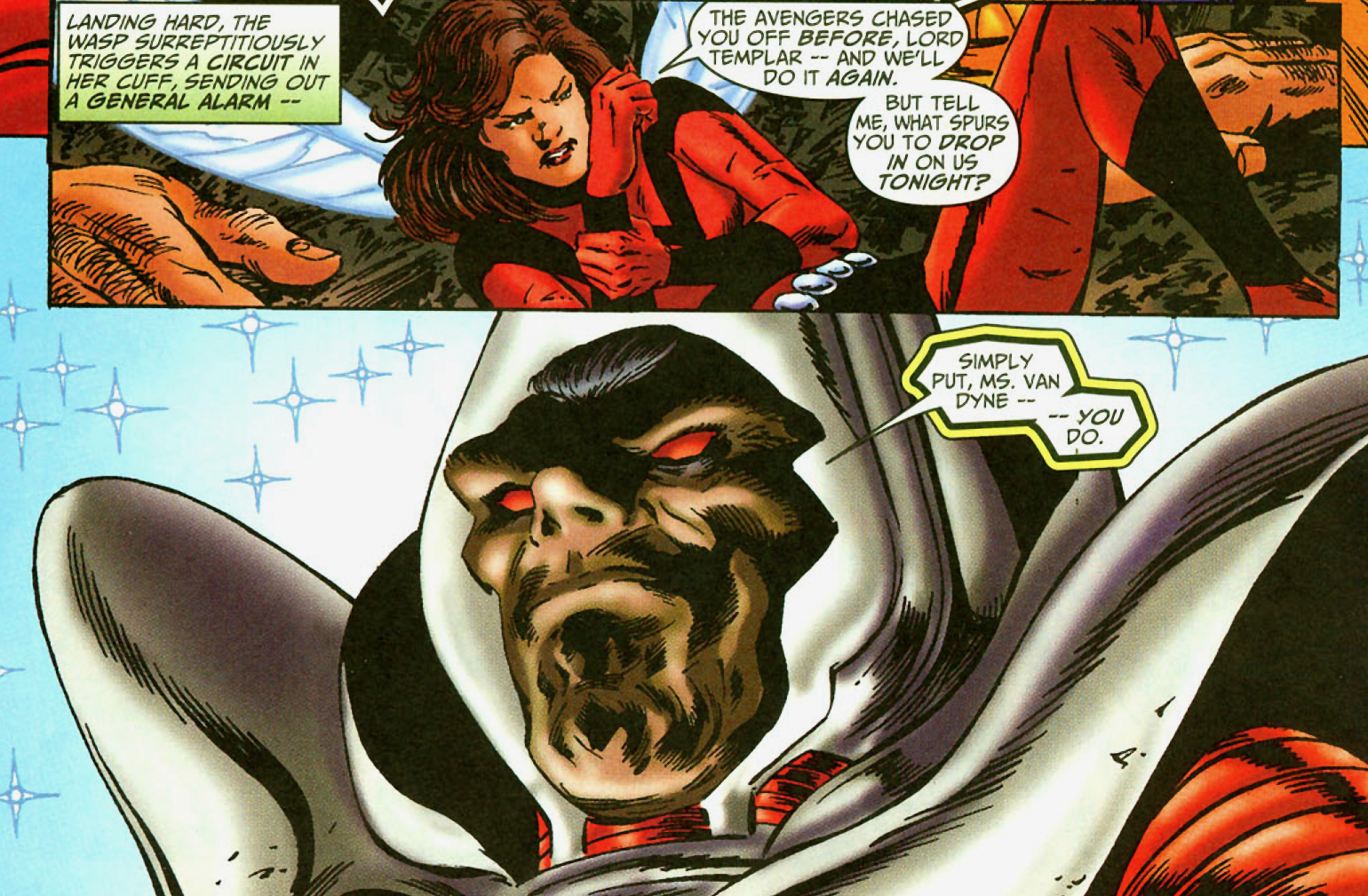




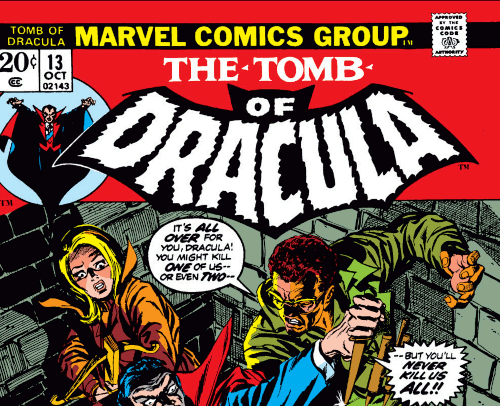
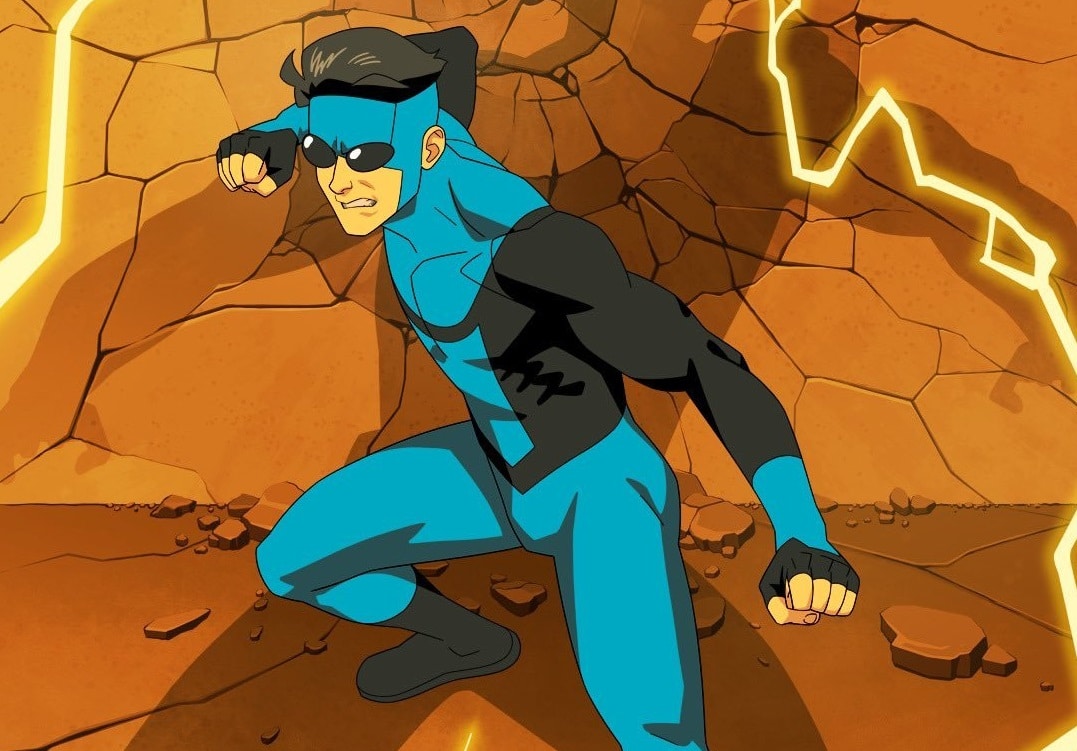


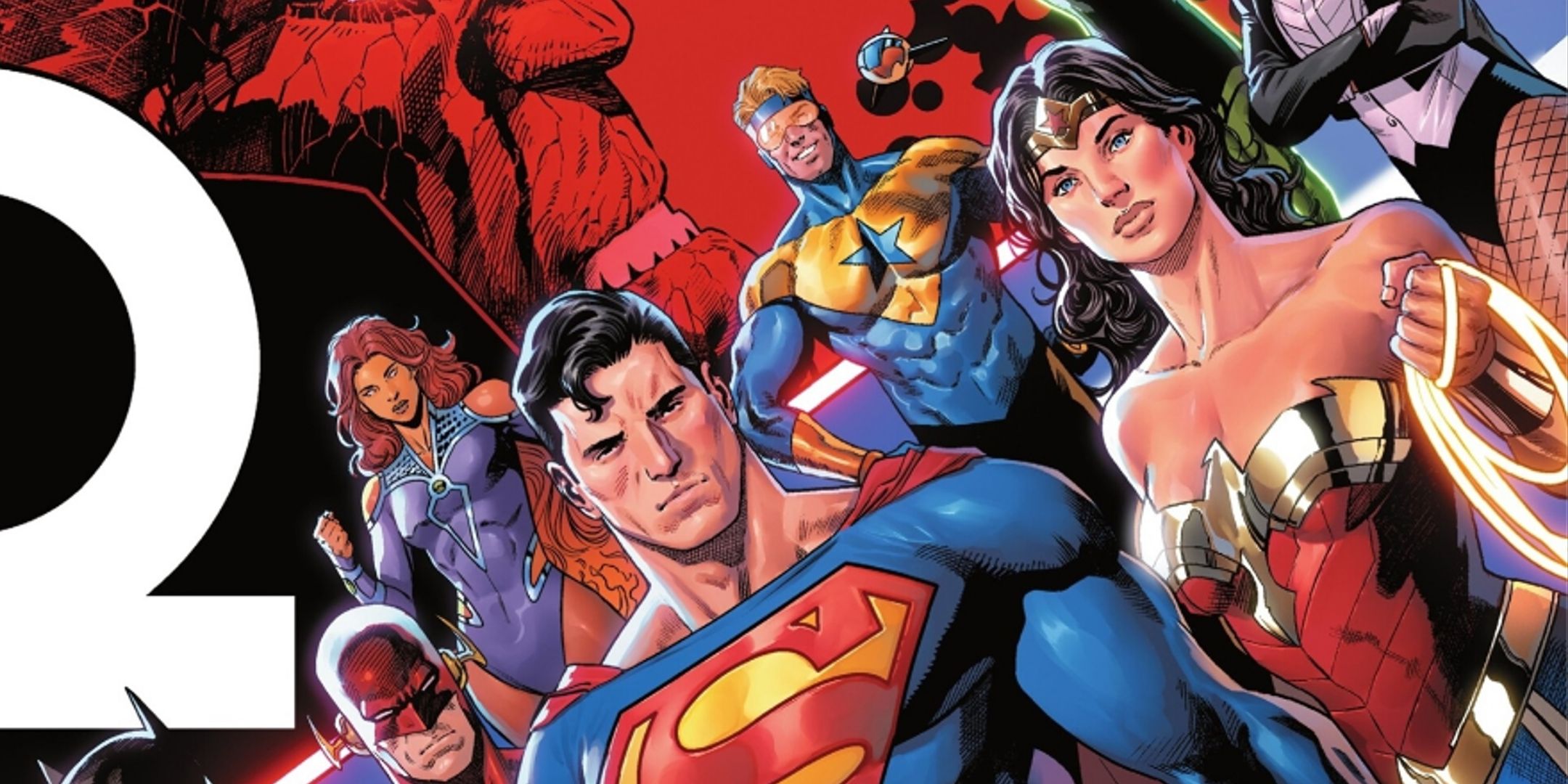
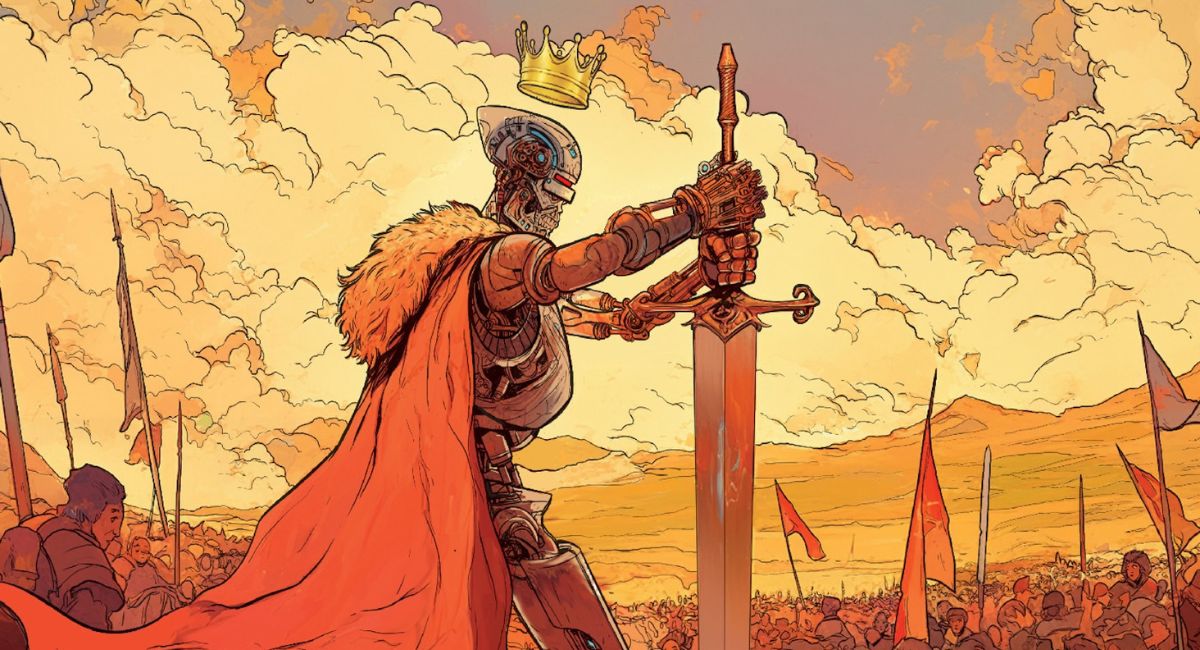


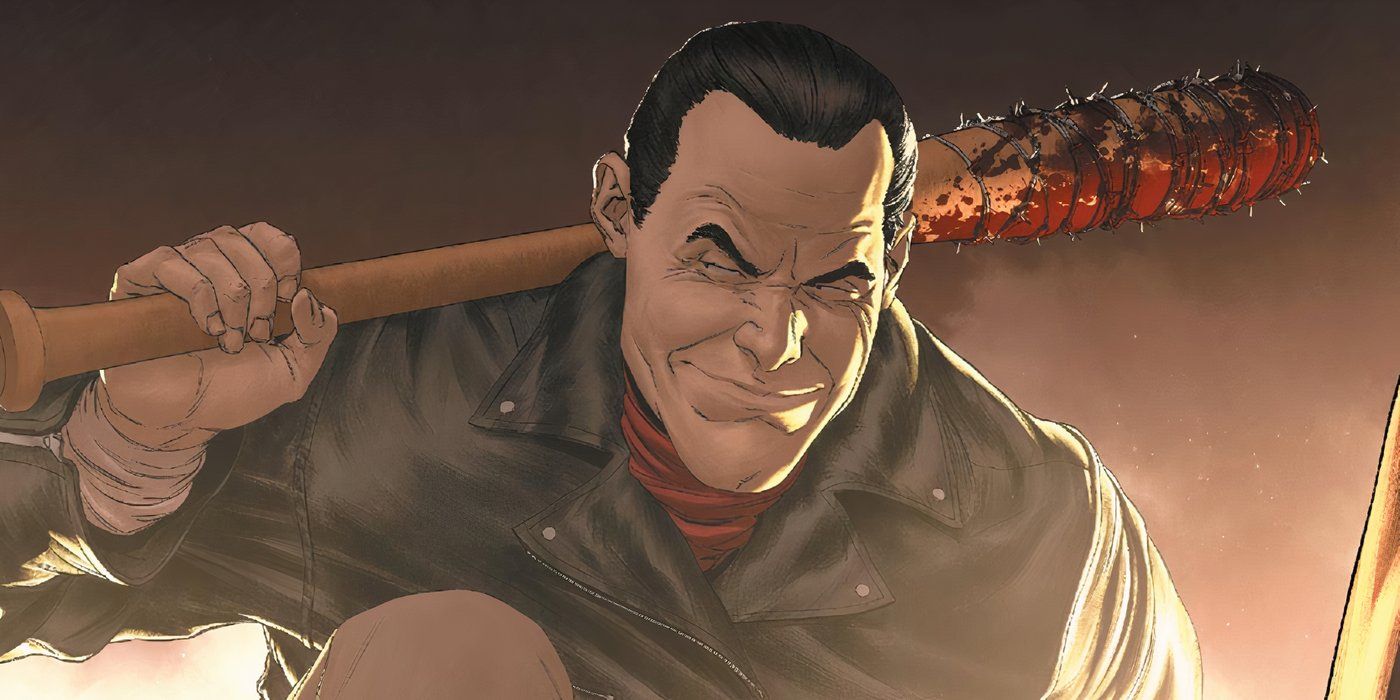




 English (US) ·
English (US) ·